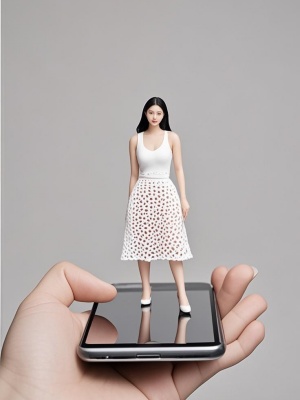The Captivating World of Abstract Scenery Art
Introduction: Redefining Landscapes Through Abstraction
Abstract scenery art represents a fascinating intersection between traditional landscape painting and avant-garde artistic expression. Unlike representational landscape art that aims to faithfully depict nature, abstract scenery art distills the essence of environments through color, form, and texture. This genre allows artists to convey emotional responses to nature rather than literal interpretations. For those interested in exploring more about artistic techniques, our AI Painting Guide offers valuable insights.
The Evolution of Abstract Scenery Art
From Impressionism to Complete Abstraction
The journey from representational to abstract scenery art began with Impressionist painters who first challenged photographic realism. Artists like Monet and Cézanne paved the way for complete abstraction by focusing on light and color rather than precise forms. The 20th century saw pioneers like Kandinsky and Rothko take this further, creating landscapes composed entirely of emotional color fields.
Key Characteristics of Abstract Scenery Art
- Emphasis on color relationships over realistic depiction
- Simplified or exaggerated natural forms
- Expressive brushwork and texture
- Non-representational compositions
- Focus on conveying mood and atmosphere

Creating Abstract Scenery: Techniques and Approaches
Problem-Solution Matrix for Artists
| Common Challenge | Abstract Solution |
|---|---|
| Capturing vast landscapes | Use color gradients to suggest space |
| Representing natural elements | Develop symbolic shapes for trees, water, etc. |
| Conveying time of day | Experiment with warm/cool color palettes |
| Creating depth | Layer transparent washes of color |
Digital Tools for Abstract Scenery Creation
Modern artists are increasingly using digital tools to create abstract scenery art. Our AI Text to Image feature allows artists to generate abstract landscape concepts from textual descriptions. This technology can serve as a springboard for creative exploration.
Interpreting Abstract Scenery Art
Viewing abstract scenery art requires a different approach than traditional landscapes. Rather than asking "What is this a picture of?" viewers should consider questions like:
- What emotions does this piece evoke?
- How do the colors interact and affect my perception?
- What natural elements might these abstract forms suggest?
- How does the composition guide my eye through the piece?
Contemporary Applications and Trends
Abstract scenery art has found new applications in interior design, digital media, and even therapeutic settings. Many designers use abstract landscapes to create calming atmospheres in healthcare facilities. The genre continues to evolve with mixed media approaches and environmental themes becoming more prominent. For those interested in seeing contemporary examples, visit our Gallery section.
Conclusion: The Enduring Appeal of Abstract Scenery
Abstract scenery art offers a unique way to experience and interpret our natural world. By freeing artists from literal representation, it allows for more personal and emotional connections with landscapes. Whether created traditionally or digitally, these works continue to challenge and inspire both creators and viewers. As technology advances, tools like those featured in our AI Art Guide are opening new possibilities for abstract expression in landscape art.
For further reading on abstract art techniques, consider visiting the Tate Museum website, which offers excellent resources on modern and contemporary art movements.